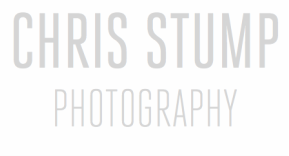When using a DSLR or a compact camera that has interchangeable lenses one has the choice of employing prime [fixed focal length] or zoom [variable focal length] lenses. Since migrating from film to digital I have done a 180 degree turn from shooting almost exclusively with primes to almost always carrying zoom lenses.
Now that modern zooms are as sharp at all focal lengths than many primes of the film era the reasons for this are obviously convenience...carrying fewer lenses and switching them less often is certainly easier. And in fact, I don't tend to think of zooms as infinitely variable across their respective ranges, but rather as two or three lenses in one. A 24~105 zoom to me is a 24mm, 35mm, 85mm, and 105mm lens...my favorite focal lengths. All zooms are clearly marked on the barrel with common focal lengths, but I sure wish it was common to put subtle detents or clicks at each setting as well. There's no reason a photo has to be shot at exactly, say, 35mm instead of 33mm or 37, but I'd sure like to have that ability.
One feature I like on the Leica Typ 109 compact camera, which took the photo above, is that the software can be set to automatically come to rest on the next 'standard' focal length each time the zoom ring is bumped up or down. A quick flick will send the lens from 24mm to 28mm and so on. And, the camera can be set to return to the previously used focal length every time it's turned on...while many compacts revert to the widest setting on power up. Both very nice features.
And speaking of Leica again, what I'd REALLY like to see come back is the notion of 'step zoom' lenses such as the Tri-Elmars made for M-series cameras. There were two models I believe...a wide angle version with 16mm, 18mm, and 21mm settings, and then a more medium angle model that covered 28mm, 35mm, and 50mm. I'd actually always thought of them as 'old' designs...M3 era or so, but apparently the medium range version was produced into the 2000's, and the wider one may still be in the Leica catalog.
Anyway, the idea was that these lenses would be optimized [and reportedly super sharp] at three different discrete focal lengths, and the user turned a ring to click into their desired setting instead of 'zooming' around in between them. I'd love to pick up a modern M body and one of these lenses to see if the combo is as spectacular as my imagination predicts, but both items are simply too dear to consider. [and, it's possible that these film-era designs do not perform as well with digital sensors as with film...often the case with wider lenses.]
Just imagine what modern lens designers could do with this concept today. I'm not a lens designer of course, and perhaps the advantages of this type of design over a full zoom range aren't as great as I imagine. But I'd like to think that a 20-35-50-85mm lens of this type could be smaller and sharper, or alternatively faster while staying sharp, than existing zoom lenses. Maximum aperture is really my only complaint about modern zooms. F2.8 is the fasted zoom you'll commonly see, and most are f4 or slower. Ugh.
Until this fantasy comes to pass I'll continue to be very happy with the f1.7 max on the Typ 109 I talked about earlier. Yes, it slows to f2.8 on the long end, and yes it's M4/3, so the physical focal lengths are really short [which makes shallow depth of field/subject separation a challenge], but low light performance is great and the whole package is tiny.
/end rant


 RSS Feed
RSS Feed